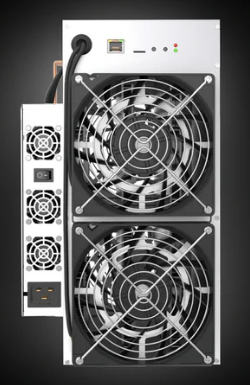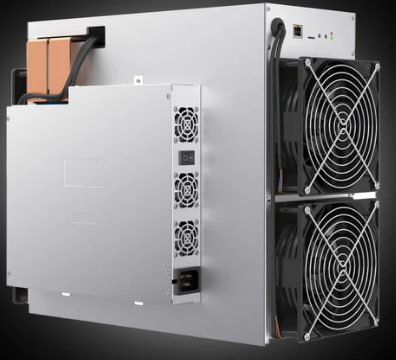iPollo G1 troubleshooting: High noise levels fix
iPollo G1 Troubleshooting: High Noise Levels Fix
Cryptocurrency mining is a demanding industry where operational efficiency and equipment performance are paramount. Among the many challenges miners face, managing noise levels from high-performance mining rigs like the iPollo G1 can be particularly daunting. While the iPollo G1 is lauded for its advanced engineering and superior mining capabilities, its quad-fan cooling system can generate significant noise, often reaching up to 75dB. For mining operators, especially those operating in residential or shared spaces, mitigating this noise is crucial for both comfort and compliance with local regulations. This article delves into practical strategies for troubleshooting and resolving high noise levels in the iPollo G1, ensuring optimal performance without compromising on operational efficiency.
Understanding the iPollo G1 and Its Cooling System
The iPollo G1 is a state-of-the-art mining rig designed specifically for Grin and MWC cryptocurrencies, utilizing the Cuckatoo32 algorithm. Its triple-board architecture, powered by advanced 12nm FinFET chips, delivers impressive hashrates of 36±10% GH/s for Grin and 126±10% GH/s for MWC31. However, this high computational power comes with substantial thermal output, necessitating an effective cooling solution.
The G1 employs a quad-fan cooling system to manage its 2800W±10% power consumption. While this design ensures stable operation and prevents overheating, it also contributes to the rig’s high noise levels. Understanding the relationship between cooling performance and noise generation is the first step in addressing this issue.
Common Causes of High Noise Levels in the iPollo G1
Before implementing fixes, it’s essential to identify the root causes of excessive noise. Here are the most common culprits:
- Fan Speed and Airflow: The G1’s fans operate at high speeds to dissipate heat efficiently. Increased fan speed directly correlates with higher noise levels.
- Vibration and Resonance: Improper placement or unstable surfaces can amplify vibrations, making the noise seem louder than it actually is.
- Dust Accumulation: Over time, dust buildup on fan blades and heatsinks can disrupt airflow, forcing fans to work harder and generate more noise.
- Component Wear: Worn-out bearings or misaligned fan blades can cause rattling or grinding noises.
- Environmental Factors: Enclosed spaces or poor ventilation can trap heat, forcing the cooling system to run at higher speeds.
Addressing these issues systematically can significantly reduce noise levels while maintaining the G1’s performance.
Practical Solutions to Reduce Noise Levels
#### 1. Optimize Fan Settings Modern mining rigs often come with software that allows users to adjust fan speeds. While lowering fan speeds can reduce noise, it’s crucial to monitor temperatures closely to prevent overheating. Finding the right balance between noise reduction and thermal management is key.

Pro Tip: Use monitoring tools to track temperature trends and adjust fan speeds incrementally. Aim to keep the rig within its optimal operating range (typically 60-75°C for most components).
#### 2. Improve Placement and Stability Vibration-induced noise can be minimized by placing the G1 on a stable, vibration-absorbing surface. Rubber pads or anti-vibration mats are cost-effective solutions that can significantly reduce noise amplification.
Pro Tip: Avoid placing the rig directly on concrete floors, as they tend to amplify vibrations. Elevating the rig slightly can also improve airflow and reduce noise.
#### 3. Regular Maintenance Dust accumulation is a silent killer of mining equipment. Regularly cleaning the G1’s fans, heatsinks, and internal components can restore airflow efficiency and reduce the workload on the cooling system.
Pro Tip: Use compressed air or a soft brush to remove dust buildup. Schedule maintenance every 2-3 months, depending on the environment.
#### 4. Upgrade Cooling Components If noise remains a persistent issue, consider upgrading the G1’s cooling system. High-quality aftermarket fans or liquid cooling solutions can offer quieter operation without compromising performance.
Pro Tip: Look for fans with lower decibel ratings (dB) and higher airflow (CFM). Ensure compatibility with the G1’s design before making any upgrades.
#### 5. Soundproofing the Mining Environment For large-scale operations or residential setups, soundproofing the mining area can be an effective long-term solution. Acoustic panels, foam insulation, or even dedicated mining enclosures can absorb sound and reduce noise leakage.
Pro Tip: Focus on sealing gaps and insulating walls to prevent sound from escaping. Portable mining enclosures are also available for smaller setups.
#### 6. Monitor Environmental Conditions Heat and humidity can exacerbate noise issues by forcing the cooling system to work harder. Ensuring proper ventilation and maintaining a cool ambient temperature can reduce the strain on the G1’s fans.
Pro Tip: Use external fans or HVAC systems to improve airflow in the mining area. Keep the room temperature between 20-25°C for optimal performance.
Preventive Measures to Minimize Future Noise Issues
Prevention is always better than cure. Implementing these measures can help maintain low noise levels over the long term:
- Routine Inspections: Regularly check for worn-out components or signs of wear and tear.
- Software Updates: Keep the G1’s firmware and monitoring software up to date to take advantage of optimizations and bug fixes.
- Proper Ventilation: Ensure the mining environment has adequate airflow to prevent heat buildup.
- Noise Monitoring: Use decibel meters to track noise levels and identify any sudden increases.
The iPollo G1 Advantage: Built for Performance and Reliability
While noise management is a critical aspect of mining operations, it’s worth highlighting the iPollo G1’s inherent strengths that make it a standout choice for professional miners:

- Premium Brand Assurance: iPollo’s reputation for quality and reliability ensures that the G1 is built to last.
- Comprehensive Warranty: With 180 days of warranty coverage, miners can invest with confidence.
- Modular Design: The G1’s architecture facilitates easy maintenance and component replacement, minimizing downtime.
- Efficient Thermal Management: Despite its high power output, the G1’s cooling system is designed for long-term stability.
Conclusion: Balancing Performance and Noise Reduction
The iPollo G1 is a powerhouse in the world of Grin and MWC mining, but its high noise levels can pose challenges for operators. By understanding the causes of noise and implementing practical solutions, miners can enjoy the G1’s exceptional performance without the accompanying acoustic drawbacks. Whether it’s optimizing fan settings, upgrading cooling components, or soundproofing the mining environment, these strategies offer tangible ways to reduce noise while maintaining operational efficiency.
For mining operators, the iPollo G1 represents a reliable and high-performing solution that, with proper care and maintenance, can deliver consistent results in even the most demanding environments. By addressing noise-related issues proactively, miners can ensure a smoother, quieter, and more productive mining experience.